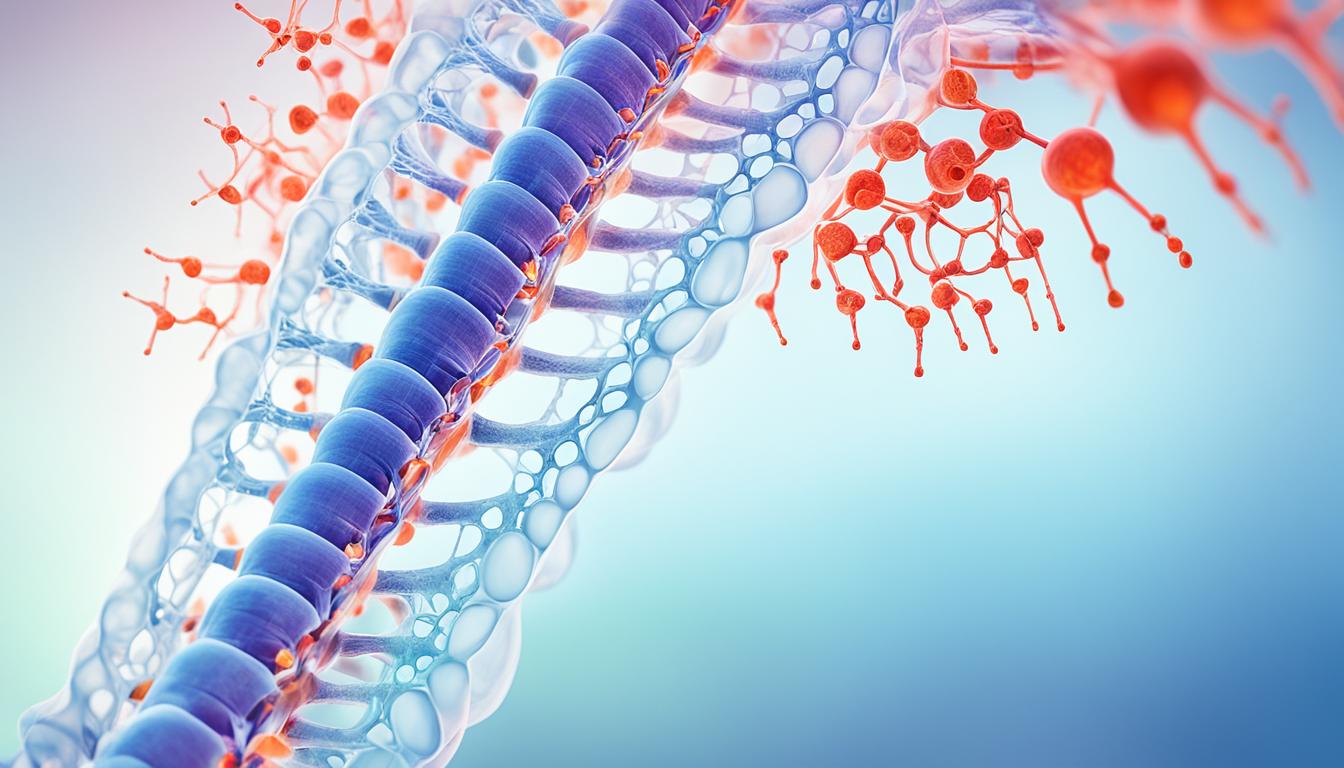Kyphosis is when the spine curves too much, making a person look hunched or round-shouldered. This can happen to anyone and at any age. Knowing the signs, what can cause it, and how to treat it are important for staying healthy.
Types of kyphosis include:
- Postural round-back
- Scheuermann’s Disease
- Congenital kyphosis
- Osteoporosis-related kyphosis
- Kyphosis associated with various health conditions like trauma or arthritis.
Signs of kyphosis can be a sore back, feeling stiff, looking different, having bad posture, and finding it hard to breathe. Doctors check for it by looking at you, taking X-rays, and sometimes using MRI machines to see more.
The care for kyphosis changes based on why you have it and how bad it is. If it’s mild, you might need to do exercises to make your body stronger and stand taller. But if it’s more serious, you could need medicine, a back brace, or even an operation.
Stem cell therapy is a new way to help with kyphosis. It uses special cells that can repair and grow new back tissues. This could help fix the curve in your spine and make you stand better.
Key Takeaways:
- Kyphosis is a condition that makes the spine curve too much.
- There are different kinds of kyphosis linked to specific health issues.
- Signs of kyphosis are having a sore back, feeling stiff, looking different, or having a hard time breathing.
- To check for kyphosis, doctors do a full check-up and some test like X-rays or MRI scans.
- Treatments can be simple, like doing exercises, or more serious, like taking medicine or having surgery.
- Stem cell therapy is a promising option for some people with kyphosis. It can help the body heal and may improve your posture.
Types of Kyphosis and Their Characteristics
Four main types of kyphosis can happen in people. Each type has its distinct features and causes.
Gibbus Deformity
Gibbus deformity involves a sharp curve of the spine. It often looks more obvious if someone with it bends over. This can be from things like trauma, birth defects, or tuberculosis. Treatment may include bracing, therapy, or sometimes surgery.
Hyperkyphosis
Hyperkyphosis is too much rounding of the spine. It’s often seen with osteoporosis, where bones are weak. This can lead to bone breaks, posture changes, and pain. Treatment might involve therapy or back-strengthening exercises. Sometimes braces are used to help.
Congenital Kyphosis
Congenital kyphosis is there at birth. It happens when the spine doesn’t develop normally before birth. It can be mild or more severe. Treatment depends on how bad it is and can include watching it, therapy, or surgery to fix the curve.
Scheuermann’s Disease
Scheuermann’s Disease starts in teenage years and can be in families. It causes a wedge shape in the spine. Pain in your neck and back is common. Treatment includes therapy, wearing a brace, or surgery in tough cases to fix the curve.
It’s key to know about the different types of kyphosis for early spotting and the right treatment. If you or someone you know has symptoms of kyphosis, getting a doctor’s help is important for a full evaluation and a plan for care.
| Type of Kyphosis | Characteristics | Treatment Options |
|---|---|---|
| Gibbus Deformity | Sharp angle and structural form, more prominent when bending over | Bracing, physical therapy, corrective surgery |
| Hyperkyphosis | Excessive curvature of the thoracic spine, usually associated with osteoporosis | Physical therapy, exercises, bracing |
| Congenital Kyphosis | Present at birth, varying severity of spinal curvature | Monitoring, physical therapy, surgical intervention |
| Scheuermann’s Disease | Adolescent-onset, stiff vertebral wedging, neck and back pain | Physical therapy, bracing, spinal fusion surgery |
Diagnosis and Treatment Options for Kyphosis
Diagnosing kyphosis starts with a full physical exam. This includes the Adams Forward Bending Test. It finds thoracolumbar kyphosis. Doctors often use x-rays to look for vertebrae wedging and endplate issues. Sometimes, an MRI is needed to check on spinal nerves. These tests help doctors figure out why kyphosis happened, how bad it is, and if it’s getting worse.
If kyphosis is mild, exercises to strengthen the core and improve posture may help. For more severe cases, there are different treatment options. This includes pain management medicine, using braces to support the spine, or surgery to fix the curve. Talking with a doctor is very important to pick the best treatment for each person.
New treatments like stem cell therapy offer hope for some people with kyphosis. This therapy uses the healing power of stem cells to repair and grow new bone tissue. It works well for kyphosis linked to conditions that make bone growth hard. But, like other treatments, it should be carefully considered and discussed with doctors.

